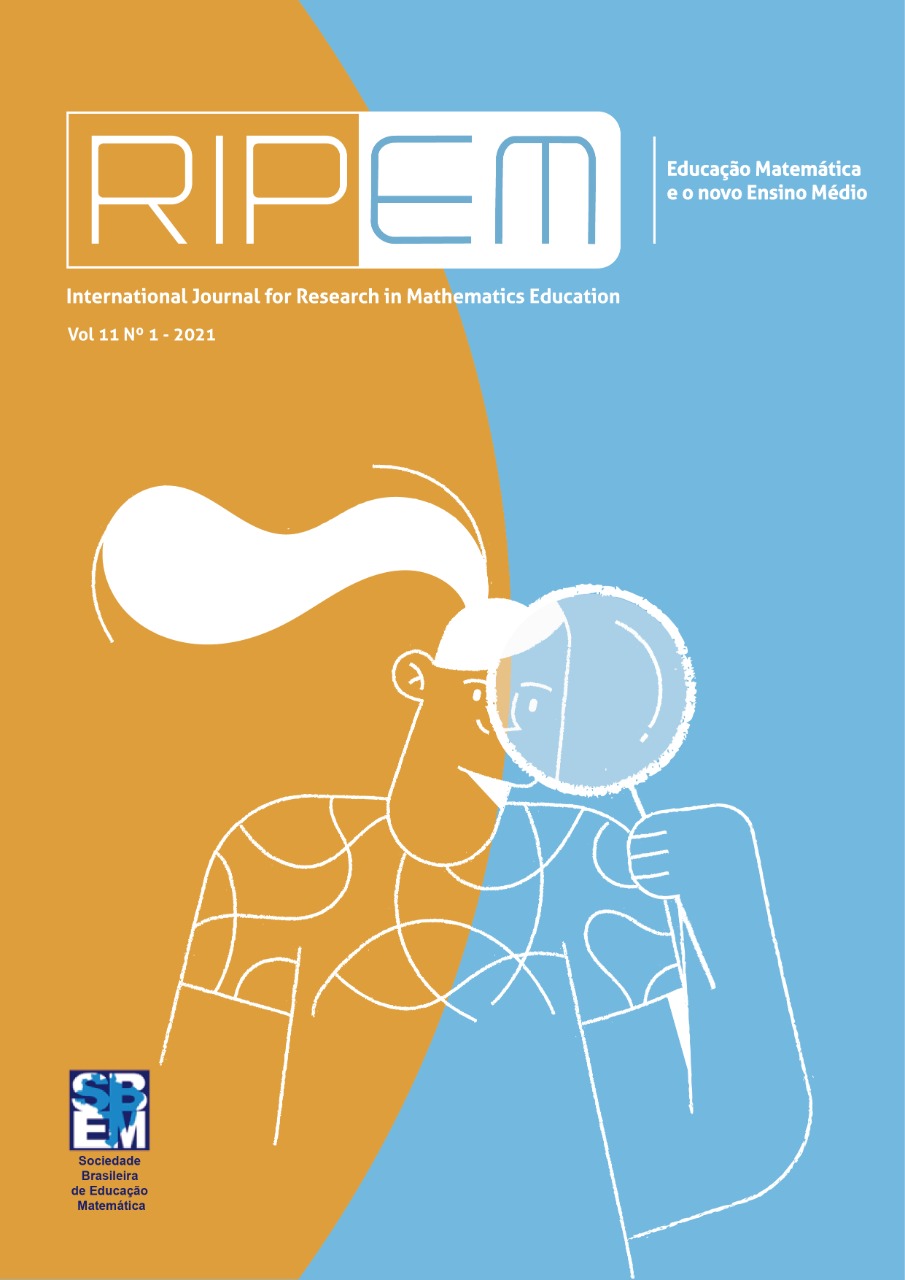Mathematical Modelling as a formative itinerary propose on new high school: a possibility to the development of abilities and competences
DOI:
https://doi.org/10.37001/ripem.v11i1.2540Keywords:
New High School, Formative Itinerary, Mathemathical Modeling, Abilities, CompetencesAbstract
In this article, a formative itinerary propose in New High School using the Mathematical Modeling as a possibility to the development of abilities and competences is shown. As the National Curricular Guidelines for High School indicate, this new stage programming must be composed by a basic general formation (BNCC) and the formative itineraries. The formative itineraries are described by a set of situations and educational activities chosen by students, according to interest, to deepen and increase learning in one or more knowledge areas and in technical and professional instruction. In this context, The Mathematical Modeling is configured as a possibility of formative itinerary, focusing on deepening the learning in the mathematics and technologies area, in a way of articulating knowledge with other areas. Being a strategy that approach real world situations, it allows discussions about social questions, developing the critical thinking and it can be seen as a cooperative activity between teacher and student, based on mutual knowledge exchange. It also encourages mathematical applications and solving problems as a process to develop general and specific abilities and competences. The formative itinerary proposed by Mathematical Modeling indicated in this task is product of an experience made with students from a school located in Rio Grande do Sul. The coice of this approach happened because of the fact that Mathematical Modeling promoves the conexion between structuring axes, highlighted by the National Curriculum Guidelines for High School: the cientific investigation, because it deepens science concepts to understand ideas, phenomena and processes, expanding the abilities related to think and do science; the mediation and socialculture intervention at the moment the student discuss the results and prepare a critical analysis of the solutions presented by a constructed mathematical model. This implies students to deepen their knowledges about questions that affect life, being able to compreend the utilization of these in diferent contexts and situations. At the end of the itinerary, the creative procedures are evidenced in the elaboration of materials to share the results, as well in construction of final report, showing possibilities to increase abilities related to think and do creative. Living this itinerary, the student can expand the capacity to use knowledges of different areas to create personal or productive projects, linked to life programs. Therefore, the formative itinerary involving the Mathemathical Modeling is configured as a viable project for the New High School, promoting the development of many skills and competences by the students during their journey.
Downloads
References
Almeida, L. M. W.; Silva, K. A. P. (2016). Práticas de professores com Modelagem Matemática: Algumas Configurações. Educação Matemática em Revista, 46, 6-15
Bassanezi, R. C. (2004). Ensino-aprendizagem com Modelagem Matemática. 2. ed. São Paulo: Contexto.
Brasil. (2013). Ministério da Educação. Diretrizes Curriculares Nacionais Gerais da Educação Básica. BrasÃlia: MEC, SEB, DICEI.
Brasil. (2016).Medida Provisória n. 746 de 22 de setembro de 2016.
Brasil. (2017). Lei n. 13.415 de 16 de fevereiro de 2017.
Brasil. (2018a). Base Nacional Comum Curricular. BrasÃlia: MEC.
Brasil. (2018b). Conselho Nacional de Educação. Resolução CNE/CEB n. 3/2018. Atualiza as Diretrizes Curriculares Nacionais para o Ensino Médio. Diário Oficial da União, Poder Executivo, BrasÃlia, 22 nov. Seção 1, 21-24.
Brasil (2019). Referenciais Curriculares para a elaboração de Itinerários Formativos.
Freire, P. (1987). Pedagogia do Oprimido. 17ª ed. Rio de Janeiro: Paz e Terra.
Gardner, H. (1999). O verdadeiro, o belo e o bom: os princÃpios básicos para uma nova educação. Rio de Janeiro: Objetiva.
Meyer, J. F. C.; Caldeira, A. D.; Malheiros, A. P. S. (2011). Modelagem em Educação Matemática, 3.ed. Belo Horizonte: Autêntica Editora.
Scheffer, N. F.; Campagnollo, A. J. (1998). Modelagem matemática, uma alternativa para o ensino-aprendizagem no meio rural. Revista Zetetiké, CEMPEM-FE/UNICAMP, 6 (10).
Tatsch, K. J.;Santos, L. M. M.; Bisognin, V. (2006). Modelagem matemática como estratégia de ensino-aprendizagem: questões sobre a previdência social brasileira. In: Educação Matemática em Revista,RS, 7(7), 78- 85.
Published
How to Cite
Issue
Section

This work is licensed under a Creative Commons Attribution-NonCommercial-NoDerivatives 4.0 International License.








